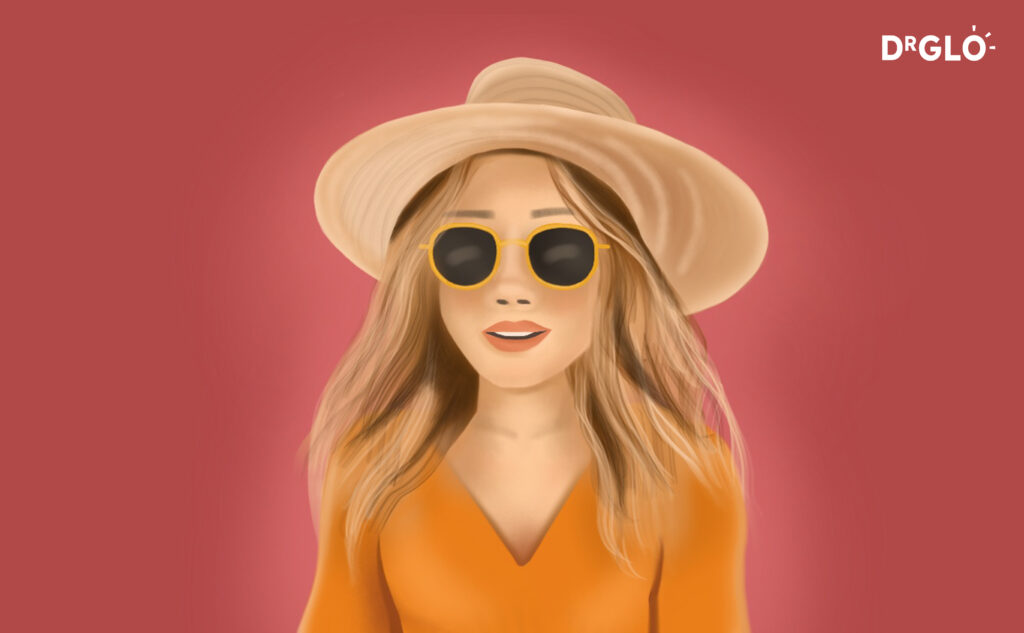
It is important to not wait until you develop skin cancer before you start to be diligent with sun protective measures. The earlier you start on this journey, the better. For those of you who have children or grandchildren, it would be important to get them started when they are still young so it is a habit! Sunscreens, glasses and protective clothing are MUST HAVES for sunny days.
Here are some recommendations.
Be sun smart at work and at play
As a general rule, then there is light, there is UV radiation. Therefore, it is important to protect yourself from UV radiation that cause health problems such as sunburn, skin ageing, eye damage and skin cancer. The 2 types of UV radiation that reaches the earth’s surface include UVA and UVB.
UVA = ages -> cause skin aging (wrinkles and uneven skin tones)
UVB = burns -> causes skin cancer (non-melanoma and melanoma skin cancer)
It is important to understand the properties of UV radiation so that you and your loved ones can be protected.
One must be aware of the concept of slip, slop, slap seek, slide. This is one of the most successful health campaigns in Australia and worth knowing.
Keep covered up – protective clothing
Whenever possible, protect your eyes and skin by wearing sunglasses, broad-brimmed hats and long sleeves. Choose clothing that blocks out most of the UV rays. A simple test to see how much light goes through your clothes is to hold it against the light. If light comes through, it means that UV rays will too. Make sure to choose close-weave materials. Better yet, select clothing that has UPF ratings.
When swimming, consider wearing a full wet suit rather than swimmers.
Sunscreen

For body sites that cannot be easily covered up, it is important to use a broad spectrum SPF50+ sunscreens that block out both UVA and UVB.
Sunscreens block out harmful rays that not only cause skin cancers but skin aging as well.
Remember to re-apply sunscreens throughout the day is important. It would be important to select a suitable sunscreen based on preference like the consistency and smell. Choose a sunscreen that is suitable for you. Your doctor may be able to offer you some samples to try before you commit to using one in the longer term.
Seek shade
Whenever possible, seek shade under shelters, trees and use umbrellas . A cloudy day does not automatically protect you from UV rays. In fact, haze can increase UV radiation exposure because of how the rays are scattered.
Get some vitamin D
Many people may unknowingly be deficient in vitamin D particularly if they are avoiding the sun, working indoors or following their cultural practices where their skin is generally covered.
It is important to check the Vitamin D levels which can be detected based on routine blood tests ordered by your doctor.
Vitamin D is important for maintaining bone health, supporting the immune system, regulating mood and playing a role in the absorption of calcium.
There are several ways to get vitamin D.
Natural sun exposure
The most natural way is through sunlight. Spending time outdoors can help the body produce the vitamin D that it needs. However, it is important to avoid excessive sun exposure as that will increase the risk for sunburns, skin ageing and skin cancers. A safe way to get enough vitamin D naturally is to be exposed to the sun for 10 minutes a day with direct sunlight to the face and arms in the morning or late afternoon when the UV index is below 3.
Diet and Supplementation
If natural sun exposure is not possible or practical, then diet and supplementation would be preferred.
It is rather difficult to get enough vitamin D through food alone as only certain foods are good sources of vitamin D. These include fatty fish, egg yolks and fortified dairy products and cereal.
If sunlight and diet are not enough, consider taking vitamin D supplements. There are many available over the counter options available, from chewable gummies to tablets with additional ingredients such as calcium.
Please speak to your doctor for personalised advice about vitamin D.
How Much Sun Protection Do You Need?
The key to sun protection is a clear understanding of the UV Index. We have designed a chart to help you navigate your day-to-day activities under the sun with the right level of protection, ensuring your time outdoors is both enjoyable and safe for your skin.


PRO TIPS
Please remember that on an overcast day, you can still get sunburned if the UV index is high! For this reason, rely on the UV index value! Rely on the numbers and not how you feel as UV radiation is invisible!

EXTENDED READ

Interested in deepening your understanding of sun safety and the UV Index? Visit our comprehensive guide, How to be Sun Smart: Master the UV Index and Avoid Nasty Sunburns.
 Common Skin Conditions
Common Skin Conditions Paediatric Conditions
Paediatric Conditions Skin Cancer
Skin Cancer Infectious Skin Conditions
Infectious Skin Conditions Other Skin Conditions
Other Skin Conditions Treatment & Management
Treatment & Management Prevention & Skincare
Prevention & Skincare













Popular Articles